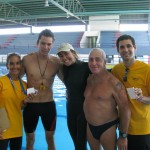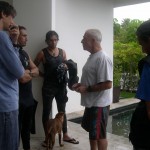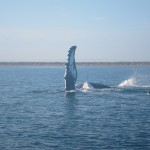This is definitely a first for us! We have been teaching free diving since 1994, and we have never had to cancel a course, the hurricanes have been kind to us and we have never lost more than a day to bad weather and that covers Eilat ,The Turks and Caicos ,Greece and Mexico!
But to be chased out of the water by Giant Squid !!!
Photo by Carlos Aboyo
http://www.caboyo.com/
In the Turks and Caicos we have had sharks following us up and down the line and never missed a beat , but this was a different ball game .
We had had some experience with these predators before in 2005 when we nearly lost Armando Torres, the president and founder of AIDA Mexico to two of them that adhered to him while safety diving for Luis Turrent.
This until now had been a very good course, 3 spear fishermen from Cabo San Lucas. There had been initially some issues with equalisation, the usual syndrome, particularly tenacious in spearos–looking down the line. Other elements had progressed well, the course had been on two weekends with two weeks in between. I had given them one simple but very special breathing exercise and the breath walk. On first attempt they had achieved 4:00 mins static each and 75 mts dynamic in long bi fins. Their original marks had been from 1:50 -2:20 static and 25 mts dynamic .
One had reached 1:52 after a 1 min static in breath walk and the rest not far behind. As was usual their main challenge was finning technique. This is the hardest thing of all to change in spearos. They are used to descending effortlessly with a ton of weights and a very rapid ascent to the surface. Might work for 7-10mts but not safely for 30 mts !!
First you have to convince them, then undo their bad habits, then teach them. There are obstacles at each stage.
But here we were ready to do drops (variable head down) For inurement to pressure and being able to separate the feeling of squeeze from “help I am running out of air “.We were over 80+mts of water in case MT and I got a chance to drop . We were nearly dressed when our skipper pointed out that in a boat 50mts from us there was some strange action . It became immediately apparent that they were hauling in Giants 3 and 4 at a time !!
So we immediately gave up on the idea of diving , we were in an invasion !! On the intercom they had ordered swimmers from the beaches out of the water.
So we began to fish them too ! One was actually gaffed when one of his brothers came and swallowed him up to the head .
We intend to report on our courses week by week and the issues that come up in them and how. we deal with them and also in the training and development of elite athletes training with us . So keep an eye on this blog .
SAFE DIVING TO ALL
Aharon












